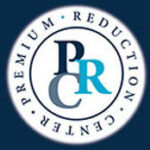Types of Captives
Captive Insurance Types and Structures
Unlocking the Power of Self-Insurance From Single Parent to Group Captives

Types of Captives
There are two primary types of captives: Single Parent and Group Captives.
A Group Captive entails joining in with a group of other companies that also have a significant focus on preventing and mitigating claims. In a group captive, you may be able to enter the captive for as little as $75,000 of casualty premiums. Casualty premiums are premiums for your “liability” coverages, such as workers’ compensation, general liability, and auto coverage. However, some group captives require $250,000 or more for casualty lines premium. Due to the lower premium requirement as an entry point as compared to self-insurance, you can receive a significantly lower Total Cost of Risk that is similar to that of self-insurance, plus you do not have to deal with all the regulatory headaches associated with being self-insured. Plus, participating in a captive can have tax advantages over self-insurance as well. Because of these advantages, you can see why Group Captives are the most popular form of alternative risk financing. In some situation, an association may form a group captive to benefit the members of the association. In those circumstances, it is not uncommon for the association program to include coverages needed by the members that may not be available in the marketplace, or would require them to purchase multiple separate policies to obtain.
Sometimes, an insurance agency or broker may form a captive insurance company to underwrite and insure (or reinsure) a number of their business clients. The agent may do that as they believe their clients' policies will produce an underwriting profit and the agency is looking to expand its sources of revenue, or it will allow them to be able to offer a more competitive program either via specialty coverages or rates.
The Tax Reform Act of 1986 created the 831(b) section of the Internal Revenue Code, making it advantageous for small-and mid-market companies to own their own insurance company. Therefore, 831(b) is really a tax election that allows small captives with gross premium income of less than $2.2 million annually to pay taxes solely on investment income and not on any underwriting profit. It may also allow for the tax deductibility of premiums, as well as the proceeds/dividends of captive may be taxed as a capital gain in lieu of ordinary income depending upon the captives ownership and should the captive meet the risk sharing and distribution requires laid out in the IRS code. These are often called "micro-captives. Learn more about 831(b) Captives.
Structures of Captives
In addition to the types of captives, there are several structures you could be involved in:
- Traditional Multi-Cell Captive. Each of the captives in the large captive insures the risks of those separate captives whether they are a single parent, group, association, agency, etc. However, if one of the captive cells undergoes significant financial problems there may be collateral damage to the other cells in the captive, much like a fire may cause collateral damage to surrounding units.
- Segregated (Protected) Cell Multi-Cell Captive. Similar to that of a Multi-Cell or Rent-A -Captive in that there are multiple captives formed within the larger captive structure, However, there is a regulatory barrier between cells that protects each cell from each other. It is like having a super-firewall existing between each condo unit. No damage is going to occur outside that segregated cell. Therefore, you do not need to worry about the risk resulting from another captive cell collapsing.

Turning Premiums Into Profits: How Captive Insurance Can Revolutionize Your Business

Captive Insurance Services
Your Single Destination for Captive Solutions
“Selling” you on using insurance captives is not what we want to do, as captives are not for everyone. Only businesses that understand and can benefit from using insurance captives should pursue using captives to finance their risks. Providing the guidance, tools, support, resources and education needed to help achieve success is the focus of the Duncan Financial Group.
In addition to guiding and supporting you through the entire captive process, Duncan provides initial and ongoing workshops and webinars on the types and structures of captive, how they work, how to gauge success, benchmarking results and key performance indicators, understanding captive financials, as well as keeping you abreast of current events that impact the captive insurance world. Having a deep understanding of the captive success factors and challenges you may face is key to improving your captive success.
Although reducing insurance costs through the lower cost structures of captives is attractive to business owners, it is important for a business owner to know if a captive is the right option for them. We will perform an analysis of your safety and risk management practices, as well as a claims analysis, to determine if the time is right for you to look at a captive. We can also determine if a group or association insurance captive, or your own single parent captive, makes the most financial sense for you to pursue.
Preliminary Financial Analysis
Entering a captive can be financially advantageous, but there is an initial cost of starting your own captive, or entering a group captive. We will review those costs as well as assess the impact of the collateral requirements on your financial picture. This includes potential impacts on cash flow, loans, or lines of credits. Our accounting and CPA professionals can review your current financials, and financial situation, and help advise you in your decision, and even make recommendations to help structure your financials before submitting for captive review.
Preparation of Captive Submission
Qualifying for a captive and establishing your premiums and reinsurance costs requires a much more extensive compilation of data about your business, your operational and claims history, and financial picture. We will walk you through this process and help gather all of the required data; we will then compile it into formats that the captive managers will want so that they can analyze your submission to join their captive.
Captive Manager/Program Selection
With over 7,000 captives, over 1,000 captive managers, and hundreds of group captives, finding or creating the right captive program and choosing the right captive manager is important for both the protection and financial success of your business and your captive. In addition to our own captive domiciled facility and captive manager, we have access to dozens of captive programs and managers that can best meet your needs.
Consultation on Captive Ownership
Understanding who should own your captive can impact who has the financial responsibility and benefit of the captive, such as receiving dividends from the captive and their taxable impact. Understanding your goals, whether business, individual, or even your estate, will need to be considered when determining who should own your captive or captive shares. Our captive experts, and accounting and CPA professionals can advise you as you make this important decision.
Ultimately, your claims will determine the success of your captive performance. Helping to minimize the cost of your claims will be crucial to reducing how much is paid out and increasing the profitability of your program. Our deep team of over a dozen seasoned claims professionals will be your advocate and work to make sure any claim is managed, settled, or even denied, in your best interest.
Safety & Risk Management
You already have a significant focus on safety and quality, otherwise you would probably not be interested in insurance captives. However, identifying risks in your business, and determining the best ways to reduce or eliminate those risks will help achieve greater captive success. Our team of over a dozen Certified Safety Professionals, Certified Risk Managers, and Certified WorkComp Advisors can help your team build and implement custom risk management programs to reduce your total cost of risk and improve your captive profitability.
Human Resources
The success of any business starts with its employees. Hiring, managing, training, and retaining the best employees are obviously critical. Our deep team of human resource specialists, including a human resources attorney, is there to support your team so they have the right information, make the right decisions, and implement the best programs.
Benchmarking Captive Performance
Just because you are in a captive, does not mean that you do not need to worry about how things are going, how things are performing. Assessing how well your captive is performing, especially in a group or association captive is critical. We will work with you to assess how well your captive cost structure is performing against the traditional marketplace, help you to understand and determine if there other members of your captive that are overly negatively affecting your results, and if the captive cost structure is appropriate.
Benchmarking Your Business’ Performance
As the cost of your captive insurance program is directly affective by your claim costs, it is important to manage your captive, not by the end results (your claims) but by a complete matrix of criteria that are leading indicators of potential problems that could lead to claims. Criteria such as injury frequency, near misses, rejected product counts, turnover, peer observation reports, and out of service vehicles, are just a few of the leading indicators with point to potential larger issues. Our deep risk management and safety professionals will help you to build the matrix of criteria to benchmark yourself against, as well as structure the means to test and measure them.
Even with insurance captives, you buy insurance to pay your unexpected claims. Since it’s common for business owners to mix business assets, property, vehicles and investments with personal ones, oversights often occur under traditional insurance arrangements. In addition to our Risk Assessment helping you to become a safer, more productive and profitable company, the assessment provides us with unique insight into your operations, and both your business and personal world. Through our Coverage Analysis, we will make sure that your business and personal insurance protection meets your needs.
Captive Audits
If you are already in a single parent captive, or group or association captive, we can perform a deep analysis of your captive and your overall safety performance. Using benchmarks, we can help you determine if the captive is actually benefiting you or not, and if there are other factors that need to be addressed to help you to improve your insurance captive performance.
Get Your Custom Risk Management Plan Today
Simply fill out the form and our team of experts will reach out to you to discuss your personalized risk management strategy.
